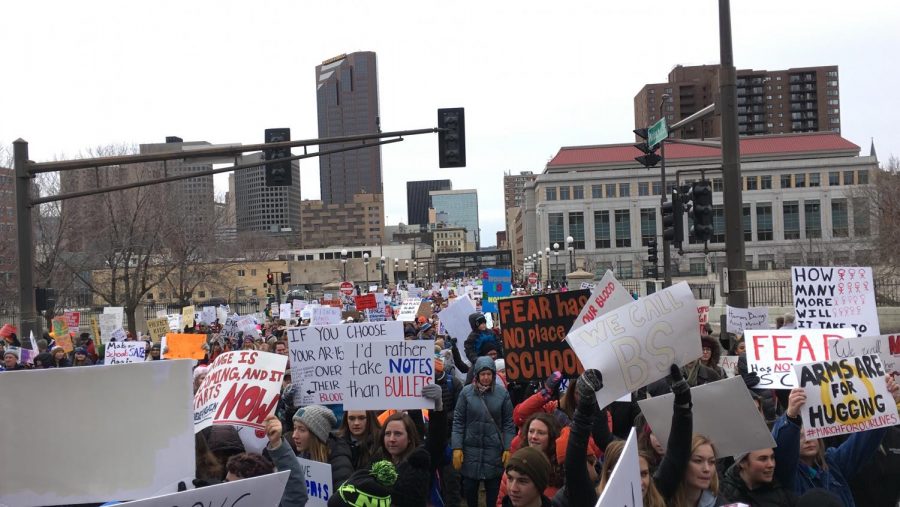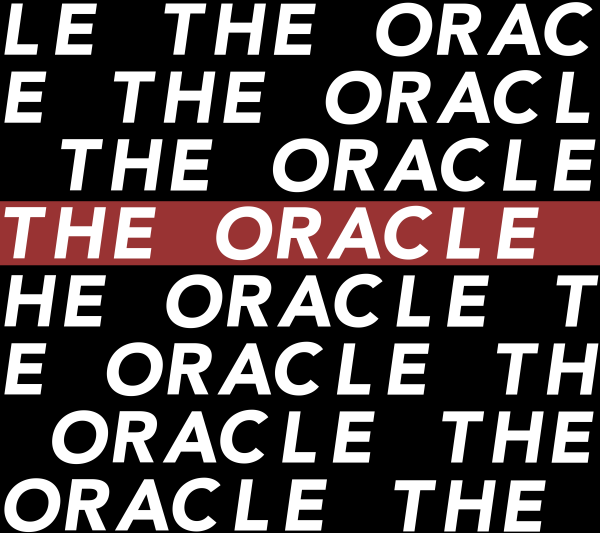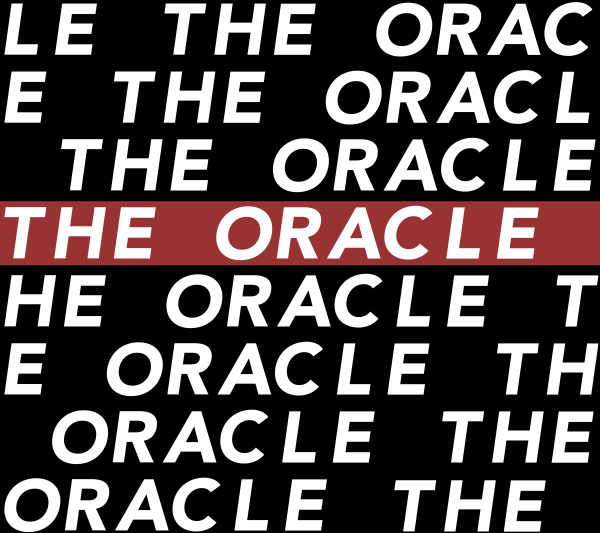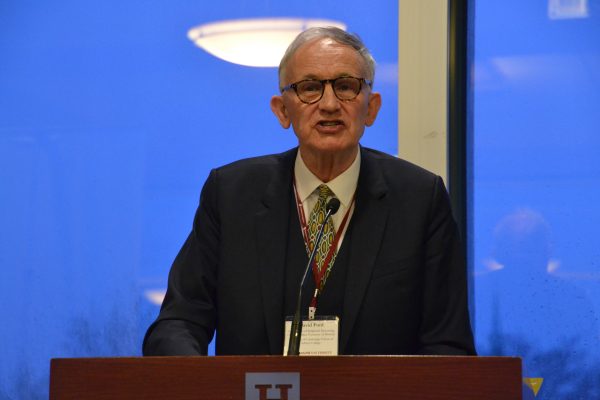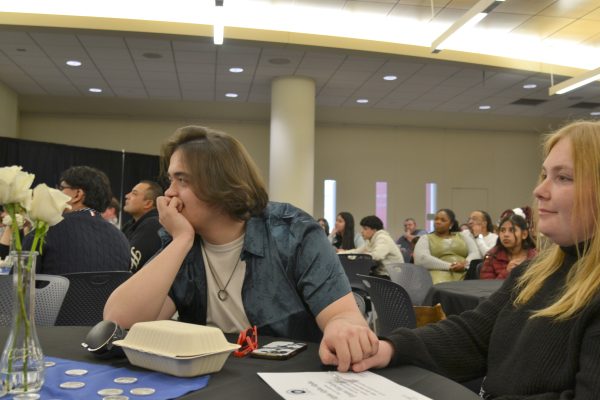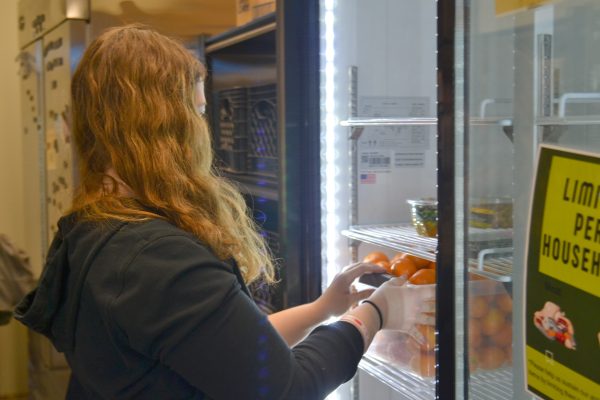What democracy looks like
Thousands gather at the state capital to advocate for tighter gun control.
April 11, 2018
“Show me what democracy looks like!” This call was just one of many repeated in a crowd of thousands who marched the streets of downtown St. Paul in the chilly weather of a Minnesota morning.
On Mar. 24, students, parents, and advocates marched from Harriet Island Regional Park to the Minnesota State Capitol in one of the several “March for Our Lives” that occurred across the nation. The event was organized in response to the February 14 Parkland school shooting and other incidents of gun violence in the country. The march, sponsored by the Minnesota chapter of Students Demand Action, focused on recognition of how guns impact Americans and how Americans can make strides for change. The organization states they are a “nonpartisan student-run organization seeking immediate legislative action to combat gun violence.”
The marchers demanded similar values of legislation and restriction, such as improved background checks and raising the minimum age to buy weapons. Participants also attacked the NRA for doing little to prevent shootings. Chants such as “hey ho the NRA has got to go” or “hey, hey NRA, how many kids have you killed today?” were frequently used in the march.
St. Paul Police estimate 18,000 participants marched the 1.8-mile distance to the capitol, while an estimate of 20,000 gathered in front of the building to listen to a program of speakers that included lawmakers. 26,000 users claimed to be “interested” in going to the event on Facebook.
Of these thousands of marchers, K-12 students were heavily visible at the event. Several used posters to express their fears about being shot in their classrooms.
“It was surprising that there was a wide range of people, young and old,” said Hamline first-year Ella Smith.
Smith’s roommate, first-year Helen Dolan, also took note of the range of participants, especially in regards to attending the march as a college student.
“Gun violence should be an issue for everyone, not only high school students,” Dolan said.
Volunteers stationed on Harriet Island pulled aside many of these young participants and registered soon-to-be first-time voters. Importance was placed on the upcoming midterm elections as a chance to change gun laws throughout the day.
But school shootings were not the only topic of conversation. Several signs held by marchers addressed the systemic oppression and frequent exposure to gun violence communities of color face. Speakers, including a student from Students Demand Action, also referenced a need for action for these populations. Smith appreciated the recognition of violence outside of school shootings.
“I was pleased to find that many signs brought up the fact that gun violence is a huge issue in black communities,” Smith said, though she noted it was not the focus of the event.
“I do think that more should have been done to include shootings that happened outside of high schools. However, most of the people who attended the march were high school students.”
National March for Our Lives representatives are now asking for support on a petition to change gun legislation. While activists are holding local meetings for reform, no more national events are planned at this time.

